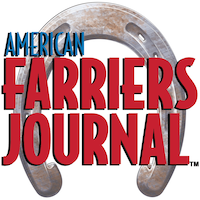Agreed. According to the Merck Veterinary model, 30% of all horses, but 60% of performance horses have them - https://www.merckvetmanual.com/horse-owners/digestive-disorders-of-horses/stomach-gastric-ulcers-in-horses#:~:text=Mild%20stomach%20ulcers%20are%20seen,90%)%20in%20race%20horses.
And from this study: https://www.ncbi.nlm.nih.gov/pmc/articles/PMC10093336/
The nutritional risk factors associated with ESGD have remained consistent since 2015. Specific risk factors include lower hay provision and consumption, lower meal number per day and higher grain and starch feeding [9,18,30,37,40,45,46]. Horses that had access to some pasture turnout were less likely to have ESGD, with horses turned out with other horses having a further decreased risk, in one study [40]. Conversely, pasture turnout was not found to be protective against ESGD in other populations [46,47]. Pasture provision likely plays a multifactorial role in disease pathophysiology that will be discussed later. Oral hypertonic electrolyte administration increases lesion number and severity of ESGD [48].



